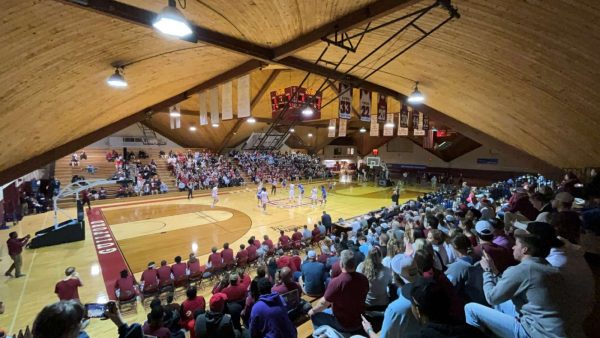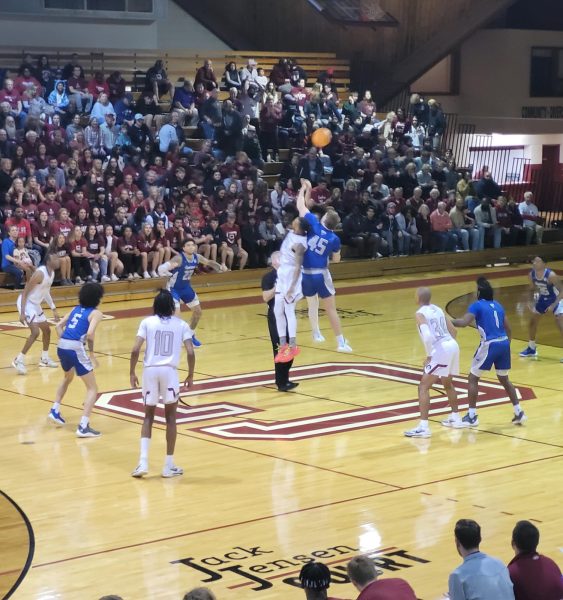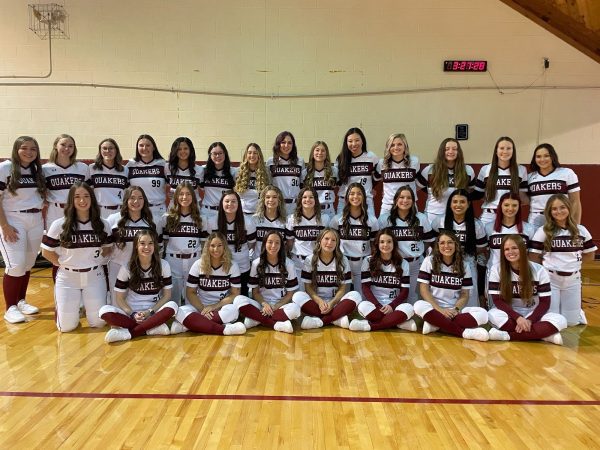Athletics Department in need of third director in three years
In the Oct. 11 issue, The Guilfordian ran a story reporting on the performance of athletic director Sue Bower. On Oct. 21, staff and faculty received an email from Guilford College president Jane Fernandes stating: “After deep consideration, Sue Bower is no longer serving in the role of athletic director at Guilford College and is moving on to other opportunities. The College wishes her well.”
Bower served as the athletic director for one year and three months before her sudden departure. Before Bower, Craig Eilbacher served in an interim capacity in spring 2018, relieving Nelson Bobb who served as interim athletic director for the fall semester in 2017.
Before Bobb, Tom Polumbo served as the athletic director for 10 years before stepping down amid an impending Title IX lawsuit. This most recent dismissal continues a trend of tumultuous endings for the college’s top job in athletics.
The trend raises questions about the relationship between Athletics and the administration. As the leader of the athletics department, the director reports to the president of the school.
According to an Oct. 15 email addressed to the campus community, as part of a “modified 360 degree review” of the president, Guilford’s board of trustees engaged Tania Jarosewich, Ph.D., from the Censeo Group to conduct a survey of faculty, staff and trustees.
“The snapshot is very positive,” trustees Ed Winslow and Charlotte Roberts stated in the email. “There is a clear consensus that The Guilford Edge is a crucial ingredient in the future success of the College, and that Jane has courageously set the tone, tenor and pace to make it a reality.”
One blemish on Fernandes’ tenure at Guilford was the Title IX lawsuit that was settled this past summer. However, according to a July 31 News and Record article, Fernandes said “(the court) made no determination that the College had done or is doing anything wrong. But we decided to use the opportunity to look hard at our athletics program and try some new things.”
The lawsuit alleged discrimination because of a lack of resources being allocated to women’s sports and smaller programs such as track and field, stemming largely from a lack of funding.
As stated on the Guilford College website, “Guilford College’s Board of Trustees is the governing body exercising ultimate institutional authority as set out in the Bylaws of Guilford College.” The board’s authority includes approving the annual budget; therefore the athletics director does not have final say on funds allocated to the department.
The president’s cabinet and the board of trustees have stayed silent toward students in regard to the dismissal of Sue Bower. While staff and faculty were notified on Oct. 21, there has yet to be a student notification.
“It feels like we have lost our heart and voice,” said Corby Brooke, a junior women’s soccer player. Several Guilford athletics staff members declined to go on the record, but also expressed surprise about Bower’s departure.
Over the past year, Sue Bower spoke publicly and privately about her vision for the department, where she wanted to promote equity across the board. Her background as a golf coach and as a senior athletics administrator at Tulane University in the aftermath of Hurricane Katrina positioned her to do just that.
Something she felt passionate about was ensuring that programs have assistant coaches and that they would be compensated accordingly and equitably.
Barbara Lawrence, Vice President for Diversity, Equity, and Inclusion/Title IX Coordinator, and Stephanie Flamini, Deputy Title IX Coordinator, are the parties that work yearly with the board of trustees and senior administration to set standards of equity in the department.
Guilford’s 2018-19 Equity in Athletics Disclosure Act report shows that gender-based inequalities still exist at the College.
Guilford’s 2018-19 EADA report is available online at Guilfordquakers.com under athletics reports. Equity in Athletics data for thousands of colleges and universities is available at ope.ed.gov/athletics.
According to the U.S. Department of Education website, “the Equity in Athletics Disclosure Act requires co-educational institutions of postsecondary education that participate in a Title IV federal student financial assistance program, and have an intercollegiate athletic program, to prepare an annual report to the Department of Education on athletic participation, staffing, and revenues and expenses, by men’s and women’s teams”
At Guilford in the 2018-19 year, part-time male assistant coaches were paid on average 56% more than their female counterparts. In addition, full-time male assistants made 31% more on average.
Bower headed up an Equity in Athletics Committee last year, charged with creating a five-year gender equity plan. At the conclusion of the 2019 spring semester, the committee had a working plan that was submitted to the president.
At the beginning of this academic year, Fernandes took over the committee. There has been no release of a gender equity plan to the campus community.
One of the main sections in Guilford’s EADA report is athletics participation, where an institution reports the number of student-athletes, which theoretically should reflect the gender makeup of the school.
In a year where the undergraduate male to female percentages were 48% to 52% percent respectively, the athletics department’s percentages were 63% to 37%.
That 26% difference translates to 107 more male student athletes. The number 107 is only one short of the 108 players listed on the online 2018 roster of the football team.
While the site listed 108 football players, the EADA shows 78, which shrinks the percentage difference. Smaller institutions often seek to explain the inequity in numbers of male athletes vs. female athletes by stating that the number of football players is responsible for the disparity.
The EADA report is designed to make sure that schools’ athletics departments reflect the makeup of the campus. When Guilford’s football team is taken out of the equation, the gap between male athletes and female athletes is 6%, or 26 participants.
Participation is not the only area that raises concern. The cost of operating expenses per participant also raises questions. In the case of baseball and softball, the 2018-19 baseball team, with 34 members, spent $760 more per participant than the 2018-19 softball team, which had 29 members, only five fewer members than the baseball team.
This is not only an issue across gender lines, but within them as well. Women’s basketball and volleyball require relatively the same amount of equipment, yet women’s basketball spends $2,999 more per participant.
From the 2018-19 EADA report, it appears that even though the Title IX lawsuit was settled, there is a long way to go. The issues of participation and funding equity that brought about the suit continue to be pervasive.
Bower challenged the long-standing status quo of inequity in the athletics department. However, Bower only served as Guilford’s athletic director for 15 and a half months.
A change in department leadership leaves women’s basketball head coach Stephanie Flamini as the only link to the administration, as she has been asked to take over day-to-day operations after Bower’s departure. Flamini now assumes two full time roles, as her team begins regular season competition in early November.
Editor’s note: This story originally was published in Volume 106, Issue 4 of The Guilfordian on Nov. 1 2019.






Danny Chilton • Jan 12, 2020 at 11:11 am
Even a minimum amount of research should have revealed it’s Palombo. I, too, was surprised at Bower’s sudden departure. Hopefully, the college can emerge stronger and with a clear focus.
Danny Chilton ’74